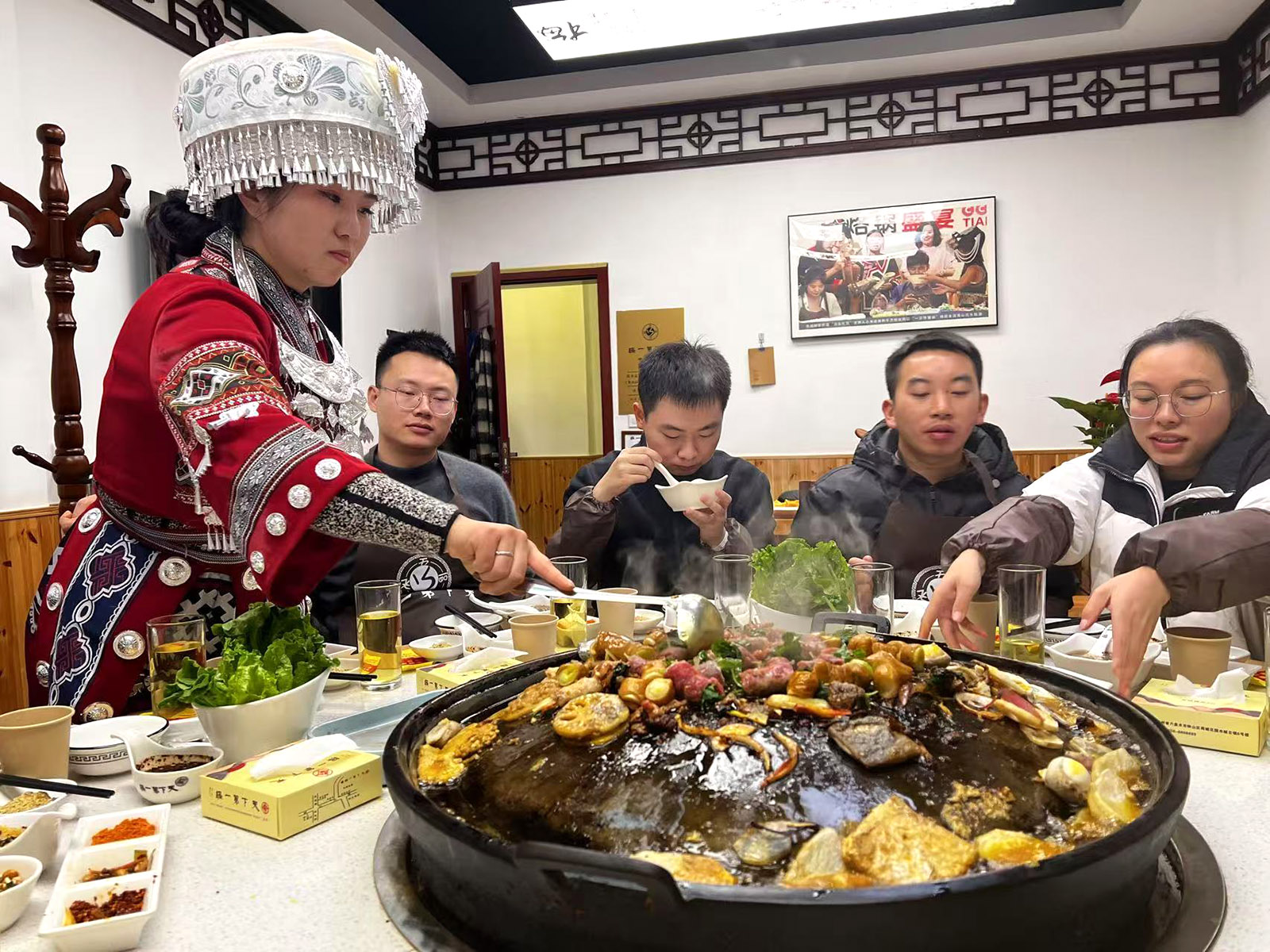
Lao guo is a feast that comes from famine. It's a contemporary culinary celebration that hails from deprivation over four centuries ago. The delicacy is one of "three pots" — along with goat meat soup and Cichong chicken hotpot — now gaining growing acclaim beyond the borders of its origins in Shuicheng district, Liupanshui city, Guizhou province.
Lao guo is said to have been created 400 years ago, when Wu Sangui, a Qing Dynasty (1644-1911) general, sent troops to suppress an uprising by the Yi in what is now Shuicheng. The soldiers ran out of food and had to hunt game and forage for vegetables, which they grilled atop roof tiles heated over open flames.
READ MORE: Guizhou is an adventurer's paradise
Over the years, people switched out the clay tiles for circular black-iron domes. Their shape allows the juices to drip downward toward the round edge and oil poured on the top to cascade over the morsels of meat, vegetables and tofu that sizzle on the metal.
The specialty continued to evolve as street food served in small roadside stalls until the 1990s, when it started to move into actual restaurants, leading to the emergence of the Lao Guo Food Street. Each eatery has its proprietary dipping mixes, typically mingling ground chilies, Sichuan peppercorns, fried salt, powdered peanuts and toasted sesame.
Cichong chicken hotpot similarly takes its namesake from war. It was eaten in Shuicheng since time immemorial but got its name from Cichong village, which was renamed in 1979 to commemorate the Red Army's passage through it during the Long March (1934-36).
In the later part of the 20th century, it became known as a "highway food" appreciated by truck drivers and travelers making stopovers in Shuicheng.
More recently, it also came to populate a "food neighborhood". Cichong Street, Douci Road and the surrounding area host about 30 restaurants specializing in the dish.
Cichong hotpot is acclaimed for its three quality ingredients — chicken, tofu and water.
The village's clear and slightly alkaline spring water is said to contain over a dozen minerals, including strontium, zinc and potassium. These are believed to not only offer health and flavor benefits but also endow local tofu with a tender texture that doesn't disintegrate even if boiled for a long time.
Free-range chicken is first fried with rendered pork fat and then boiled with hunks of yellow ginger, red garlic, potatoes, rice cakes and scallions. These steaming tidbits are served with bowls of buckwheat.
ALSO READ: Spicing up Chengdu's calling card to the world
This hotpot variety is not only appreciated for its flavor and nutrition but also for helping balance the body's inner energy, especially by increasing warmth during winter.
Likewise, Shuicheng's goat meat soup is often referenced in the same breath as the food-as-medicine philosophy. That's especially since the free-range black mountain goats nibble on medicinal herbs, and the meal is said to enhance the flow of qi (energy) in the body. The diced meat is usually simmered with liver, heart and stomach in red or clear broth before it's dipped into spicy powder for additional heat.
Visitors to Shuicheng will discover why these "three pots" top its tables, how they've nourished local cuisine for centuries, and why they'll continue to flavor its future for many mealtimes yet to come.


